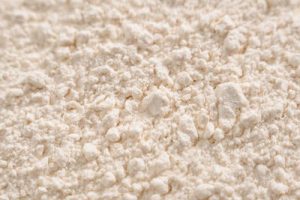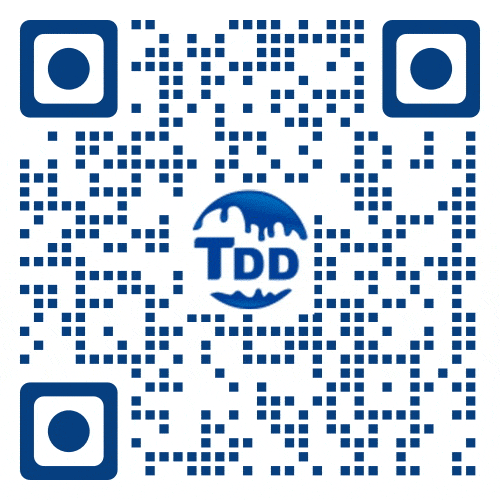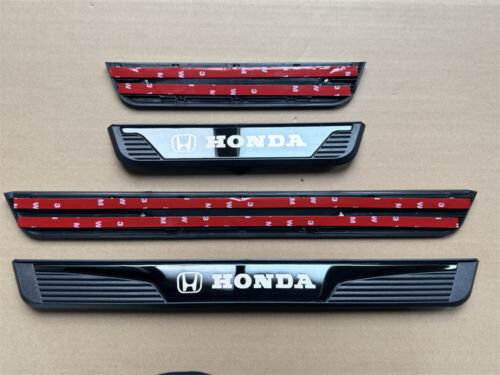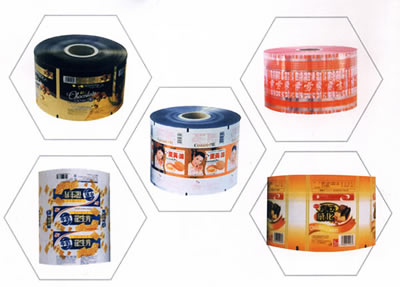Bonding agent is one of the most important auxiliary materials and is widely used in packaging operations. Adhesives are sticky substances that join two separate materials together by their viscosity . There are many types of adhesives.

Introduction #
Adhesive is actually a general term for various stress materials that connect or fit the same or different materials. There are three main types: liquid, paste and solid.
Classification #
There are many types of adhesives, which can usually be classified as follows:
Material source points #
①Natural adhesive
It is derived from substances found in nature. Including starch , protein, dextrin , animal glue , shellac, hide glue, rosin and other biological adhesives; also includes mineral adhesives such as asphalt .
②Synthetic adhesive
Mainly refers to artificially synthesized substances, including inorganic adhesives such as water glass, and organic adhesives such as synthetic resin and synthetic rubber .
Use characteristics #
①Water-soluble adhesive
Adhesives that use water as solvent mainly include starch, dextrin, polyvinyl alcohol , carboxymethyl cellulose , etc.
②Hot melt adhesive
It is a solid adhesive that is melted by heating. General thermoplastic resins can be used, such as polyurethane, polystyrene, polyacrylate , ethylene-vinyl acetate copolymer, etc.
③Solvent -based adhesive
An adhesive that is insoluble in water but soluble in a certain solvent. Such as shellac, butyl rubber , etc.
④Emulsion type adhesive
Most of them are suspended in water, such as vinyl acetate resin , acrylic resin, chlorinated rubber , etc.
⑤Solvent-free liquid adhesive
It is in the form of viscous liquid at room temperature, such as epoxy resin, etc.
The adhesive is the medium between the label material and the bonding substrate and plays a connecting role. According to its characteristics, it can be divided into two types: permanent and removable. It comes in a variety of formulas, suitable for different surface materials and different occasions. Adhesive is the most important component in self-adhesive material technology and the key to label application technology.
According to raw materials #
1 MS modified silane
Modified silane polymer ends with methoxysilane. It was invented by Zhongyuan Group in 1978. The company is the only supplier of modified silane raw materials in the world. On this basis, Belgium Novan Technology has continued R&D and innovation. Produces a series of high-quality sealants and adhesives used in construction, industry, automobile transportation, civil use, etc.
2 polyurethane
The full name of polyurethane is polyurethane, which is a general term for macromolecular compounds containing repeating urethane groups on the main chain. It is formed by the addition polymerization of organic diisocyanate or polyisocyanate and dihydroxy or polyhydroxy compounds .
3 silicone
Silicones, commonly known as silicone oil or dimethyl silicone oil, have the molecular formula : (CH3)3SiO(CH3)2SiOnSi(CH3)3. They are polymers of organic silicon oxides and are a series of polydimethylsiloxanes with different molecular weights. , the viscosity increases as the molecular weight increases.
According to packaging materials #
①Paper-based material adhesive
Mainly including original (natural) starch, dextrin, casein and current chemically synthesized and environmentally friendly various water-based latex, etc. Widely used in color boxes, cigarette packs, paper bags, gift boxes, hardcover boxes and various handmade boxes, as well as wooden furniture.
②Plastic adhesive
Mainly include solvent-based adhesives such as styrene-butadiene rubber, polyurethane, nitrocellulose, and polyvinyl acetate; water-soluble adhesives such as ethylene-vinyl acetate copolymer, ethylene-acrylic acid copolymer; and emulsion-based adhesives such as vinyl acetate resin and acrylic resin. Adhesives; hot melt adhesives composed of thermoplastic resins such as polystyrene, polyurethane, polyacrylate, etc.
③Wood adhesive
It mainly includes animal glues such as bone glue, leather glue, kelp glue, casein, and blood glue; it also includes synthetic resin glues such as phenolic resin glue, polyvinyl acetate resin glue, and urea -formaldehyde resin glue; and it also includes plant glues such as soybean gum.
Adhesives and adhesives are a general term for non-metallic materials that can bond one solid surface to another solid surface due to surface bonding and internal forces (adhesion and cohesion, etc.).
According to use #
①Industrial adhesives
It is mainly used in color printing packaging , architectural decoration and wooden furniture to achieve the connection and compounding of things.
②Adhesives for agriculture and forestry
It is mainly used for slope greening or other soil structure improvement, which can make the soil form a granular structure and achieve the effect of moisture conservation. At the same time, it can enhance the water permeability of the soil, prevent soil loss caused by surface runoff, improve soil permeability, conserve soil and fertilizer, alleviate and regulate soil water evaporation, and allow crops to grow better.
formula #
Starch binder is a mixture of water, raw starch, cooked paste, caustic soda, borax and formaldehyde . The approximate proportion is: water 80%; starch 20% (raw starch accounts for 85%, cooked starch accounts for 15%); caustic Sodium (total amount of starch) 2.4-2.8%; Borax (total amount of starch) 2.7-3.2%, about 10 moles; trace amounts of formaldehyde.
Most of the starch used by some carton factories in the United States is corn starch . Some are untreated pure corn flour, while others have been chemically treated , especially the treated special starch, which has good stable viscosity and excellent water-containing properties. Some starches are powdery and some are granular. The granules are just loose lumps surrounded by powder, which are used in the batter to prepare the entire batch of paste.
Some factories use specially treated corn starch to manufacture a single-viscosity adhesive whose gelling point starts at 61°C and ends at 63°C. Although the gelation point is low, the adhesive gels quickly like a general double-sided machine paste during bonding. The viscosity is usually between 27 and 32 seconds. 500 kg of starch is used for 680 gallons of paste.
After the starch is stirred in normal temperature water, its particles are dispersed into a milky state, but it will not dissolve or absorb water. If you stop stirring, the starch will settle at the bottom and gradually form hard lumps. Once the hard lumps are formed, it will not be easy to disperse. Starch dispersed in water begins to absorb water and expand when heated. Raw starch is used in the adhesive formulation and begins to swell at approximately 70°C. When the temperature rises to 90°C, the expansion is completed. Gelatinized starch is very viscous, depending on the amount of starch in the water.
Raw material process #
Borax #
Borax is also available in powder and granular forms, with fine-grained borax being the best. Borax comes in two grades based on strength. There are 10 water molecules in 10 moles of borax, which is called grade 10 water borax. There are 5 water molecules in 5 moles of borax, which is called grade 5 water borax. 5 moles of borax is a higher concentration. 0.35 kg of 5 moles of borax is equivalent to 0.454 kg of 10 moles of borax. If the same amount of two types of borax is used incorrectly, the consequences will be serious. If borax is added to an emulsion of raw starch and water and the mixture is heated, the starch will expand rapidly after absorbing water and become more viscous than without borax.
There is a certain limit to the amount of borax added, otherwise it will affect the expansion of starch, and the gelatinized paste will become brittle and appear in a powdery state when dry.
Caustic soda only needs to contain 76% sodium oxide and is commercial grade without additives. It can be used in the form of crumbs, granules or flakes. The composition is equivalent to 98% sodium hydroxide. Caustic soda absorbs moisture from the air which reduces its strength. Therefore, if the packaging barrel is damaged, it should not be used. After opening the lid to collect materials, the lid should be closed tightly immediately.
caustic soda #
Caustic soda is a strong alkali that can cause severe burns to the skin in its dry state or when dissolved in water. Wear a face mask and rubber gloves when handling caustic soda, and keep a bottle of vinegar handy for immediate treatment of caustic soda-contaminated skin. Caustic soda will smoke when dissolved in water. Do not inhale the smoke as it is poisonous.
Caustic soda is added to the emulsion of raw starch and water, and the mixture is heated to reduce the temperature at which starch swells and gelatinizes. According to this characteristic, the amount of caustic soda added can be used to precisely control the temperature of starch expansion and gelatinization. However, adding too much will cause the gelatinized particles to split, reduce the viscosity, and cause the raw starch in the paste to gelatinize in advance.
formaldehyde #
Formaldehyde is in the state of 37% aqueous solution and is measured according to the volume or wet weight specified in the formula. Formaldehyde is commonly used in adhesives for corrosion protection. It is used as a chemical cross-linking agent in some waterproof adhesive formulations. You must wear protective equipment when handling formaldehyde, because formaldehyde is a strong irritant to the eyes and skin, so inhalation should be avoided.
water resistant adhesive #
The difference between water-resistant adhesives and ordinary adhesives is that they usually contain more raw starch, less caustic soda, and no or very little borax. Of course, water-resistant adhesives add a certain amount of waterproofing agent . There are many waterproofing agents that can be used, all of which are water-soluble resins. After this type of resin is chemically cross-linked with formaldehyde , it will become an adhesive that is insoluble in water and has certain water resistance when heated on the paste line .
Most water-resistant adhesives have a limited lifespan. Some gradually thicken over time, even under stirring conditions. Some machines have good operating performance, but their water resistance is greatly reduced. Therefore, the adhesive must be used as soon as possible after it is prepared.
water based #
Mainly through the surface absorption of moisture to complete drying or bonding. The raw solid starch in the adhesive gelatinizes on the paste line and absorbs moisture. Bonding time ranges from a few seconds to about a minute. Moisture is gradually absorbed by the surrounding air and paper fibers. This traditional form of adhesive is typically used on corrugated cardboard production lines and provides an immediate, strong bond.
In order to achieve a satisfactory bonding effect, a slightly viscous suspoemulsion containing pregelatinized starch must be added to the starch and water emulsion. This kind of suspoemulsion can suspend raw starch in water and prevent it from settling; increase the concentration so that it can be carried by the rubber roller and form a paste film of appropriate thickness on the roller; adjust the viscosity so that the paper fibers are properly moistened and initially adhered; ensure that the raw starch is properly wetted and initially adhered; There is a large amount of water around the starch molecules so that the starch can expand to the maximum extent and completely gelatinize when heated; caustic soda must be added to adjust and control the gelatinization temperature of the starch until it is as low as possible.
In order to achieve a satisfactory bonding effect, borax must be added to make the raw starch absorb all available water when heated; to produce appropriate viscosity and toughness when the starch is gelatinized; to act as a buffer to prevent caustic soda from Part of the raw starch is expanded below the minimum gelatinization temperature.















